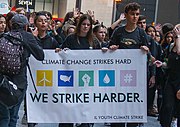BaCCC/Module 7/Lesson 1/Part 1
Contents
Module 7, Lesson 1: ACE Is the Base!
Introduction
The focus of Lesson 1 will be on the United Nations Action for Climate Empowerment (ACE) programme. It is one of the leading initiatives to bring about awareness and effective actions that reach out to all corners of the globe to be united for climate action.
Keep the motivation high as we start your first lesson – the toughest one – of your final module for this course.
Terminology
The following terms are important in understanding the science behind climate change. If you want to remember them, write their meanings in your learning journal as you encounter them in the course content.
- accountability
- Action for Climate Empowerment (ACE)
- ambassador
- communicator
- gender
- inclusion
- intergenerational
- stakeholder participation
- transparency
Action for Climate Empowerment
There are a few reasons for taking this quick look at ACE:
1. To introduce you to some of the language and concepts used to discuss climate change communication (because, rather ironically, ACE is not actually about climate change action and activism; it is about communicating the need for action and, as the name implies, empowering others to take action once they have learnt about the impacts of the climate emergency and possible mitigation and adaptation strategies).
2. To help you see the difference between on-the-ground, grassroots climate change activism (what you have been doing if you posted the social media memes you created during this course, for example) and the more bureaucratic, administrative programmes at government levels and beyond.
3. To give you an entry point in case you can see yourself working in the field of policymaking or programme management (indeed, below is a link to the National ACE Focal Points – the person in charge of ACE initiatives in each country – in case you want to get involved. If your country is not listed, contact your government’s environmental department).
4. So that you can use the priority elements and guiding principles when planning your own climate change initiative(s).
How did you do? Did you answer all ten questions in 20 minutes?
(You can adjust the playback speed and/or turn on subtitles/captions.)
H5P Object Parameters
The H5P parameters below will be replaced by the actual H5P object when it's rendered on the WordPress site to which it's been snapshotted.
Here is the official blurb for ACE:
| “ | Action for Climate Empowerment (ACE) is a term adopted by the United Nations Framework Convention on Climate Change (UNFCCC) [which was adopted in 1992 at the Rio Earth Summit in Brazil] to denote work under Article 6 of the Convention (1992) and Article 12 of the Paris Agreement. The over-arching goal of ACE is to empower all members of society to engage in climate action, through the six ACE elements – climate change education, public awareness, training, public participation, public access to information, and international cooperation on these issues. | ” |
| —UNESCO and UNFCCC, Action for Climate Empowerment: Guidelines for Accelerating Solutions Through Education, Training and Public Awareness | ||
Action for Climate Empowerment: Guidelines[3]
Here is a pdf version of the 1992 UNFCCC:
Here is a pdf version of the 2015 Paris Agreement:
References
- ↑ UNFCC, n.d. National ACE Focal Points
- ↑ Wikipedia, n.d. The Six Elements of ACE
- ↑ UNESCO and UNFCCC, n.d. Action for Climate Empowerment: Guidelines
- ↑ UNFCCC, 1992. 1992 UNFCCC
- ↑ UNFCCC, 2015. 2015 Paris Agreement


